the history of yeovil's pubs
PUBS HOME PAGE |
PUBS INTRODUCTION |
PUBS BY NAME |
BEERHOUSES |
white horse (2)
Goar Knap / New Prospect Place / 10 St Michael's Avenue
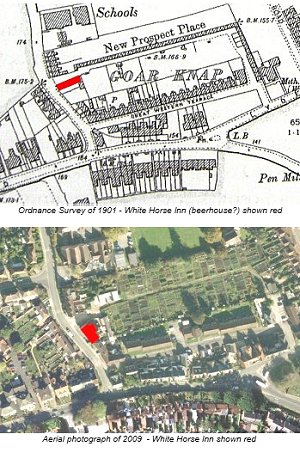 This
is the second
White Horse, not
to be confused
with the 18th
century
White
Horse.
This
is the second
White Horse, not
to be confused
with the 18th
century
White
Horse.
Although the
earliest record
I found for
licensed
premises here
dates back to
1851, there are
some puzzling
anomalies; the
1901 Ordnance
Survey map
doesn't show the
present
building, the
1891 census
lists it as
being in
New
Prospect Place,
prior to that it
was listed as in
Goar Knap and it
was not listed
as the White
Horse Inn until
1901.
Goar Knap is that area containing Great Western Terrace and New Prospect Place (see top map at left). The name comes from the Anglo-Saxon gora, a gore, or triangular-shaped piece of land, and hnaep, for rising ground or the crest of a hill. New Prospect Place was a long terrace of small cottages, now demolished and the land used now as allotments. They were described as "simply huts with no foundations and originally having earth floors". Even so they were not demolished until 1907. The western entrance to New Prospect Place would have been alongside the present building, now being the entrance to the allotments.
The early records (ie up to around 1900) are of either a beerhouse and/or a different building. However it seems that this early building may have been part of the buildings "lately erected and built by the said Samuel Isaac" in the brickyard on the site later sold to Robert Jennings. It is thought that the later public house building was erected around 1885.
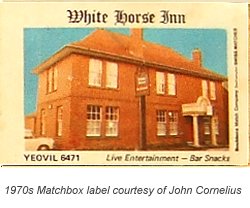 The
orientation of
the new building
clearly faces St
Michael's Avenue
and it was
possibly named
at this time.
The
orientation of
the new building
clearly faces St
Michael's Avenue
and it was
possibly named
at this time.
In 1950 the skittle alley of the White Horse was earmarked by the Corporation for use as a 'care of the homeless' furniture store in the case of a civil emergency - that is, the outbreak of another war.
The White Horse closed in 2009 and has been converted into flats.
|
Yeovilians remember... Thanks to Mike Bolton for the following memories - "Some friends and I used to run the Yeovil folk club called the Jellalabad in the skittle alley of the Somerset Inn in the late 1970's and early '80's. Previously (late 1960's early '70's) we had run the folk club in an upstairs room at the White Horse in St Michaels Avenue." |
![]()
The first recorded licensee, Richard Edgar, was born in Bradford Abbas, Dorset, just south of Yeovil in 1798. He was the son of the Joel Edgar (1744-1823) and his wife Ann née Andrews (1768-1815). In the 1851 census Richard Edgar was listed in Goar Knap with his Yeovil born wife Charlotte, their 20-year-old unmarried dressmaker daughter Hannah and six lodgers. Richard gave his occupation as 'baker & publican' and Charlotte gave her occupation as landlady. Richard Edgar died in the winter of 1858-9 aged 61. In the 1861 census Charlotte was recorded living in Vicarage Street with her daughter-in-law Elizabeth Barrett and granddaughter Elizabeth. Charlotte died in Yeovil in the autumn of 1861.
James Knight was born in Yeovil about 1807 and around 1830 married Ann Quinton who had been born in 1808 at Shepton Mallet. They were to have four children; William born 1833, Thomas born 1834, Harriet born 1837 and Charles born 1839. In the 1841 census the family were living in Jennings Buildings where James gave his occupation as bricklayer and Ann gave her occupation as glove sewer. By the time of the 1851 census the family, less Charles, were living just round the corner at 15 London Road. James was listed as a beer retailer and shopkeeper in Kelly's directory of 1861 and it is confirmed by the 1861 census that he was running the White Horse where he was living with Ann and Harriet as well as his 15-year-old nephew Robert Quinton, a mason's labourer, 4-year-old granddaughter Sarah Ann Knight and a lodger. James gave his occupation as 'Innkeeper. Mason employing 3 men & 1 boy'. In the 1871 census, although still at the White Horse in, James gave his occupation as builder and was living with Ann, son Charles now aged 34 still unmarried and also described as a builder, and granddaughter Sarah Ann. By 1872, however, Kelly's directory was listing Charles as beer retailer, which was repeated in Kelly's 1875 directory. In the 1881 census James, by now a widower aged 71, described his occupation as bricklayer and 43-year-old daughter Harriet Wynne listed her occupation as the innkeeper. Living with them in the White Horse were Harriet's six children. James died in Yeovil in the winter of 1887.
The old White Horse building was demolished and the new building erected around this time.
The next licensee, James Jenner, was born in Yeovil in 1863. In the 1881 census he was listed as an agricultural labourer boarding in Jennings Row. In the summer of 1883 he married Annie Bass and by 1889 Kelly's directory listed him as a beer retailer. The 1891 census listed James as a publican at the White Horse, New Prospect Place. Living with him and Annie were their five children; Elizabeth aged 7, Emma Nelly aged 4, Augusta aged 4 James aged 2 and George aged 5 months. Also living with them was James's brother Charles, three years his senior and a tailor, as well as a domestic servant. In the summer of 1893 Annie died in Yeovil and James left Yeovil after a couple more years - he was last recorded at the White Horse in Kelly’s 1895 Directory. In the winter of 1894 he married Elizabeth Sims in Christchurch, Dorset. The 1901 census found James and Elizabeth living in Lowestoft, Suffolk, where he was working as a general contractors labourer. Living with them were Emma Nelly, known as Ellen, James and one-year-old adopted daughter Gertrude.
John Merrick was born around 1834 in Cirencester, the son of bailiff Charles Merrick. In the 1841 census Charles was living in Sandford Street, Cheltenham with his six children. John, at this time was aged eight. In the spring of 1858 John Merrick married Yeovil-born Eliza Hawkins in Yeovil and were to have a total of thirteen children, five of whom would predecease John. In the 1871 census the couple were living in the Pen Mill Inn with their five Yeovil-born children Jane aged 9, Kate aged 7, Frederick aged 6, Ernest aged 3, Ellen aged 2 and Arthur aged 2 months. John gave his occupation as railway pointsman but it is almost certain that Eliza ran the inn during the day and he took over in the evening as was usual practice. By the time of the 1881 census John had moved his family to New Town where he gave his occupation as railway switchman. With him were Eliza and seven of their children; Frederick, Arthur, Harry, Tom, Jane, Kate and Bessie. In the 1891 census John, by now aged 55, had moved his family to 21 Camborne Grove. He gave his occupation as railway signalman, Mary Jane, the eldest daughter at 25, gave her occupation as draper's assistant, Harry was an 18-year-old glove cutter as was Thomas aged 16. Bessie, aged 15, was in service and 8-year-old Rupert was a scholar. By 1901 John had become the public and at the White horse Inn and was listed there in the census with Eliza and Rupert, by now aged 18 and an engine cleaner. There were also two boarders. John was listed as licensee of the White Horse in Whitby's 1903 Yeovil Almanack advertiser and the 1907 Yeovil directory. Eliza died in the spring of 1907 and in the 1911 census John, by now aged 74, was described as the inn keeper at the White Horse. Jane, now aged 44 and still single, was listed as his housekeeper. Also living with them was John's daughter Kate, under her married name of Hoare, with her four children. John Merrick died in the summer of 1911 aged 74 and from this time Jane, also known as Mary Jane, took over the license of the White Horse Inn where she was to remain until at least 1923.
plans

From my
collection
Plans of the White Horse, dated 1984.
gallery
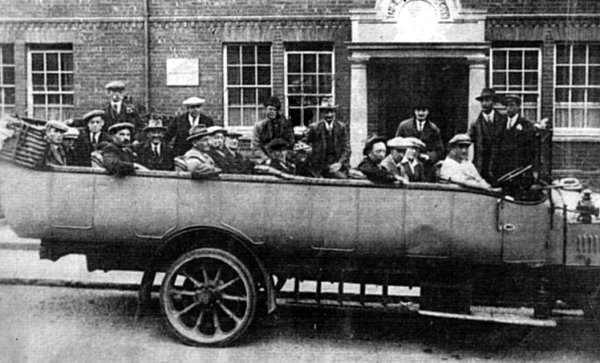
Courtesy of Rob
Baker
This photograph is from a newspaper cutting and shows a charabanc outing of the St Michael's Lodge, RAOB, outside the White Horse in the early 1930's.
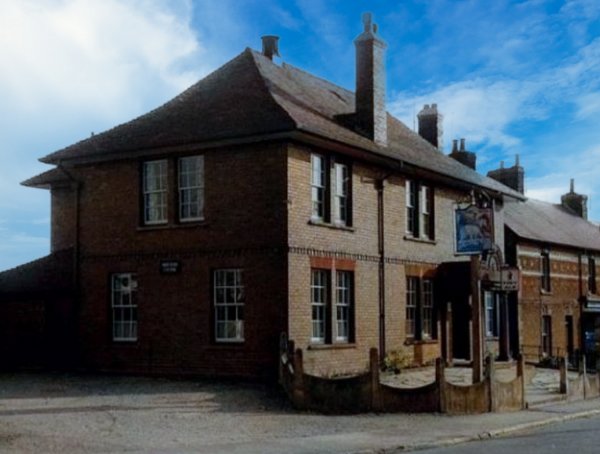
A colourised photograph of 1960 by Charrington & Co Ltd's surveyors as part of a 'stocktaking' exercise of photographing Brutton's pubs prior to the brewery takeover.
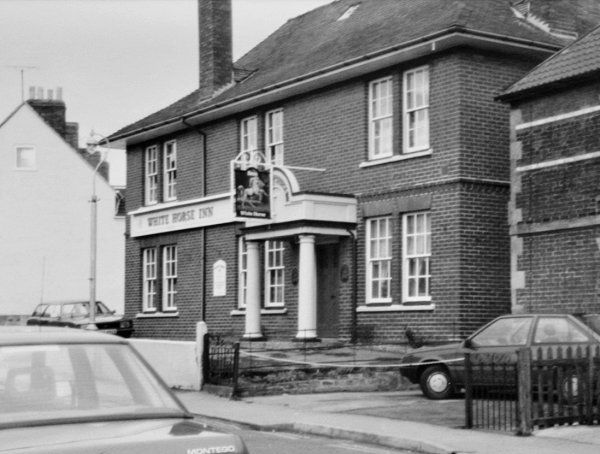
Courtesy of
Chris Rendell
The White Horse photographed in 1985.
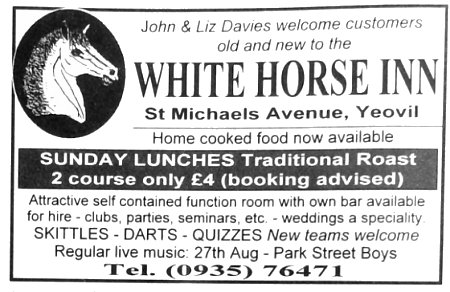
From my
collection
Advertisement for the White Horse from the Visitor, August 1994.
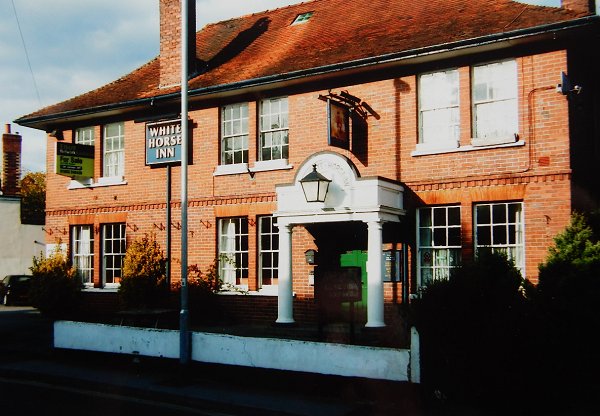
Courtesy of
Vivien and John
Cornelius
The White Horse with a 'For Sale' sign in 2009.
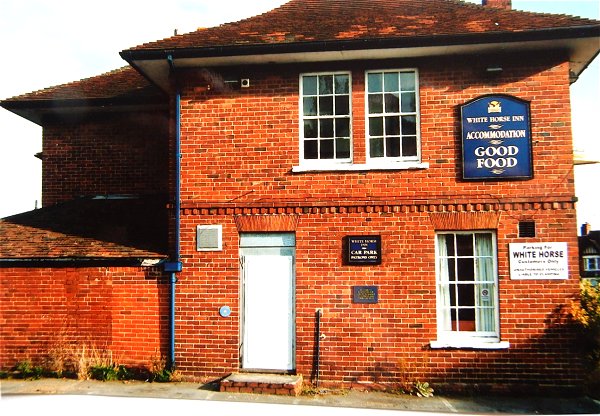
Courtesy of
Vivien and John
Cornelius
The White Horse photographed in 2009.
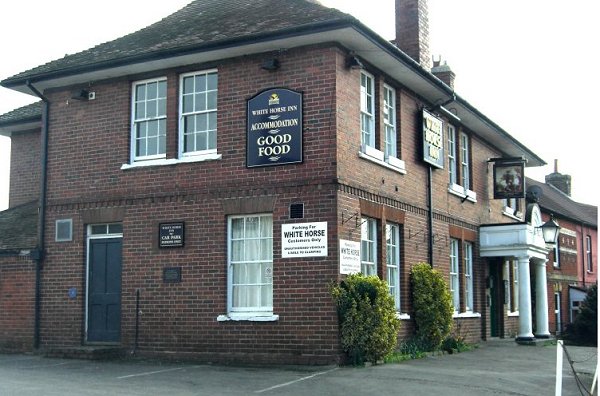
The White Horse photographed in 2009 at the time of its closure.
licensees
1851 – Richard
Edgar – Baker
and Publican
(1851 census)
listed in Goar
Knap
1861 – James
Knight –
Innkeeper &
Mason (1861
census) listed
in Goar Knap
1861 – James
Knight – Beer
Retailer and
Shopkeeper
(Kelly's 1861
Directory)
1871 – James
Knight – Builder
(1871 census)
listed in Goar
Knap
1872 – Charles
Knight (son of
James) – Beer
Retailer
(Kelly's 1872
Directory)
1875 – Charles
Knight – Beer
Retailer
(Kelly's 1875
Directory)
listed as in
Goar Knap
1881 – Harriett
Wynne (daughter
of James Knight) – Inn
Keeper (1881
census) listed
as
in Goar Knap
The old building
demolished and
the new building
erected around
this time
1889 – James
Jenner – Beer
Retailer
(Kelly’s 1889
Directory) pub
not named
1891 – James
Jenner –
Publican (1891
census) – listed
as in New
Prospect Place
1894 – Charles
Henry Perry -
referred to as
landlord
(Borough Petty
Sessions)
1895 – James
Jenner – Beer
Retailer
(Kelly’s 1895
Directory) pub
not named but in
Goar Knap
1898 – Licensee
not named (1898
Yeovil
Directory)
listed as White
Horse Inn, St
Michael's
Avenue
1901 – John
Merrick –
Publican (1901
census) listed
as White Horse
Inn
1903 – John
Merrick
(Whitby's 1903
Yeovil Almanack
Advertiser)
1907 – J Merrick
(1907 Yeovil
Directory)
listed as White
Horse Inn,
Prospect Place,
St Michael's
Avenue
1911 – Mr
Merrick (1911
census Summary)
listed as White
Horse
1911 – Mary Jane
Merrick
(Whitby's 1911
Yeovil Almanack
Advertiser)
1914 – Miss Jane
Merrick – Beer
Retailer
(Kelly’s 1914
Directory) pub
not named
1916 – Mary Jane
Merrick
(Whitby's 1916
Yeovil Almanack
Advertiser)
1919 – Miss Mary
Jane Merrick –
Beer Retailer
(Kelly’s 1919
Directory)
listed as 10 St
Michael's
Avenue
1923 – Mary
Merrick – Beer
Retailer
(Kelly’s 1923
Directory) pub
not named
1935 – Frederick
Peaty (Kelly's
1935 Directory -
Beer Retailers)
listed at 10 St
Michael's
Square (sic)
1936 – F Peaty
(1936 Yeovil
Directory)
listed as White
Horse
1938 – F Peaty
(1938 Yeovil
Directory)
listed as White
Horse
1939 – Annie
Peaty (Kelly’s
1939 Directory)
listed as White
Horse Inn
1947 – VJ
Hallett (1947
Yeovil
Directory)
listed as White
Horse
1949 – VJ
Hallett (Kelly’s
1949 Directory)
listed as White
Horse
1951 – VJ
Hallett (1951
Yeovil
Directory)
listed as White
Horse
1954 – VJ
Hallett (1954
Yeovil
Directory)
listed as White
Horse
1957 – WH
Gayleard (1957
Yeovil
Directory)
listed as White
Horse Inn
1960 – WH
Gayleard (1960
Yeovil
Directory)
listed as White
Horse Inn
1960 – NRR
Whitlock
1964 – Alan
Edward Selwood (Foord's
1964 Directory)
1965 – Licensee
not named (1965
Yeovil
Directory)
listed as White
Horse Inn
1968 – Licensee
not named
(Kelly’s 1968
Directory)
listed as White
Horse
1969 – Licensee
not named
(Kelly’s 1969
Directory)
listed as White
Horse
1970 – Licensee
not named
(Kelly’s 1970
Directory)
listed as White
Horse
1971 – Licensee
not named
(Kelly’s 1971
Directory)
listed as White
Horse
1972 – Licensee
not named
(Kelly’s 1972
Directory)
listed as White
Horse
1973 – Licensee
not named
(Kelly’s 1973
Directory)
listed as White
Horse
1974 – Licensee
not named (1974
Yeovil
Directory)
listed as White
Horse
1974 – Paul R
Drury (Kelly's
1974 Directory -
Public Houses)
listed as White
Horse
1994 – John &
Liz Davies
(Advertisement)
The White Horse closed in 2009 and has been converted into flats.